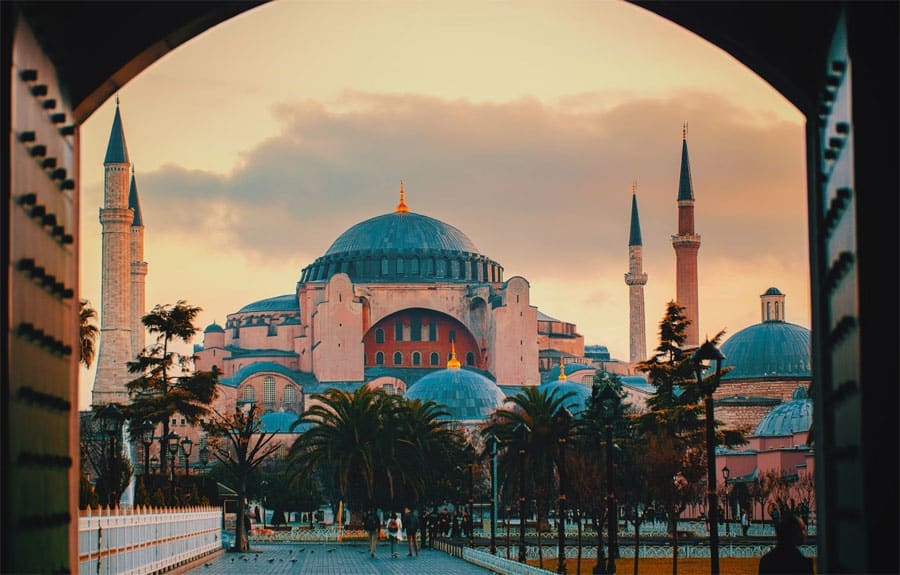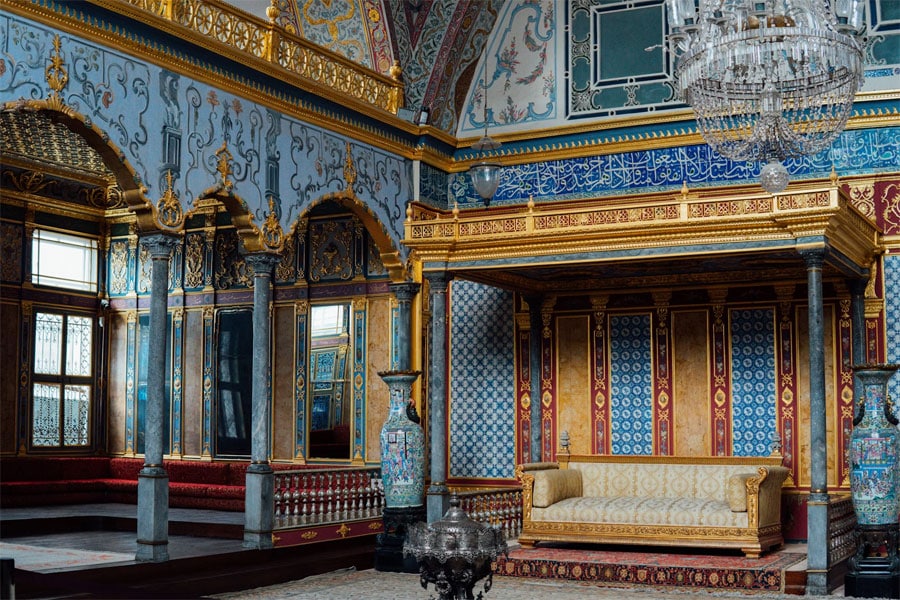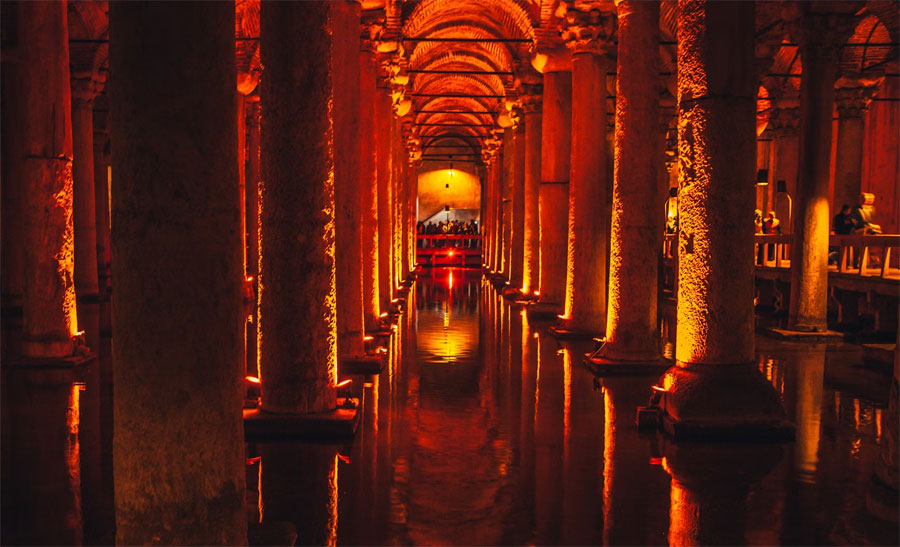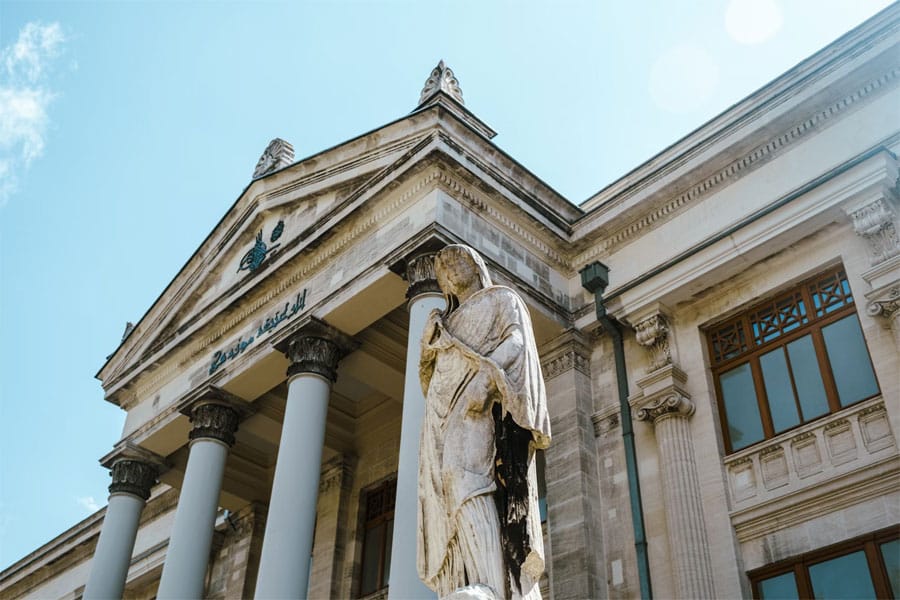Popularly known as the ‘City of Cats,’ Istanbul presents a perfect blend of contrast between ancient and modern lifestyles. Being the only city in the world that connects two continents, namely Asia and Europe, Istanbul’s unique location, combined with its rich culture and heritage, properly reflects in its diverse people, cuisine, and architecture. And with influences from its past Byzantine, Ottoman, and Roman empires, the place is also home to some of the globe’s major landmarks, most notably the Hagia Sophia mosque.
If you are a student who has been looking to visit Istanbul, then it makes sense to know some of the most well-known spots that you can explore on a budget. The ideal time to visit the region would be during the spring (April – May) or autumn (September – October) seasons, when the weather mostly remains mild with fewer crowds. Also, moving around the city would be easy with its efficient transportation system, which includes trams, metros, buses, and ferries, along with a wide range of accommodation options depending on your spending prowess. To learn more about the places that you should be visiting, continue reading our guide.
1. Hagia Sophia

Denoted as the ‘Church of Holy Wisdom,’ the Hagia Sophia is one of the most religious and historical sites in Istanbul. Established in 537 AD, the monument primarily served as a church for the Byzantine Empire for 900 years, after which it was turned into a mosque by the Ottoman Turks. Later down the line, in 1934, the place was secularized and converted into a museum. However, the conversion was short-lived, as Hagia Sophia was again re-converted into a mosque.
Touted for its massive dome, which spreads across a 30-meter radius and is supported by four pendentives, the interior of the Hagia Sophia is further decorated with beautiful marble columns and mosaics. And since it’s a religious place of interest, entry is free for all, including students. Keep in mind that the mosque remains open every day between 9 a.m. and 5 p.m., and remember to dress respectfully before visiting.
2. Blue Mosque

Known for its towering six minarets, the Blue Mosque is an Ottoman-era historical monument that still remains iconic and attracts a large number of tourists across the world. Originally constructed between 1609 and 1617, the interior of the mosque is decorated with stunning blue tiles in geometric and floral shapes and features a classic Ottoman layout that includes a centrally placed large dome with four small domes surrounding it. It also showcases stained glass windows, allowing natural light rays to creep in throughout the day, ultimately making the interiors look glamorous and unique.
Similar to the Hagia Sophia, visitors are required to dress respectfully, and women are required to cover their heads with a scarf before entering the religious site. Additionally, the entry fee remains free for all, which means that students can wholeheartedly explore what the mosque has to offer.
3. Topkapi Palace

From the 1460s to the year 1856, the Topkapi Palace served as the royal residence as well as the administrative center for the Ottoman Empire. Visiting this historical site will provide you with a glimpse into the lavish lives of the sultans, as the palace consists of four main courtyards, each serving its own function. The primary one served as a place for military parades and public ceremonies, while the second one was used as the administrative center. The third courtyard was the sultan’s private residence, and lastly, the fourth one was the palace gardens.
In addition to that, the Topkapi Palace houses a massive museum with a vast collection of Ottoman treasures, such as clothing, weapons, and jewelry, most notably the Topkapi Dagger and the Spoonmaker’s Diamond. And being a UNESCO-sponsored ‘World Heritage Site,’ there are multiple complimentary benefits for students. For starters, entry into the palace for domestic and foreign visitors is 140 TL (Turkish Lira) and 650 TL, respectively. The discounted ticket price is 45 TL. However, Turkish students aged between 7 and 25 can present their student ID proof to obtain free entry. On the other hand, foreign students presenting their student ID card can obtain the tickets at twice the discounted price. To book your tickets, visit the official website here.
4. Basilica Cistern

One of the many ancient cisterns that lie beneath the city of Istanbul, the Basilica Cistern perfectly showcases the excellence of Byzantine engineering and architecture. Created during the 6th century AD, the place features a massive underground room that can hold up to 80,000 cubic meters of water. The room is further supported by 336 marble columns that are each 9 meters in height. In a nutshell, the cistern acted as a steady water source for the emperor’s palace as well as its neighborhood surroundings. It was also used to store water in case of emergencies.
The Basilica Cistern was unfortunately closed during the 16th century by the Ottoman Turks but was later rediscovered to be turned into a tourist destination. Ticket prices are 450 TL when visiting between 9 AM and 7 PM and 1,000 TL when visiting between 7:30 PM and 10 PM. Students and children only under the age of 12 are allowed free entry (ID required), and entry passes can be bought here.
5. Istanbul Archaeological Museums

Coupled as a group of three archaeological museums, the Istanbul Archaeological Museums consist of the Archaeological Museum, the Museum of the Ancient Orient, and the Museum of Islamic Art. Each section of the museum serves its own purpose – with the Archaeological Museum showcasing a vast collection of artifacts from the country’s rich heritage, while the Museum of the Ancient Orient features artifacts from ancient civilizations such as Egypt and Persia. Lastly, the Museum of Islamic Art houses a collection of textiles, ceramics, and metalwork.
The Archaeological Museum is the largest of the three and deserves a thorough exploration, especially for students who are interested in art history and archaeology. Ticket prices normally go for 50 TL, but children under the age of 18 and students studying art history, archaeology, and museum departments at the university are free to access the place without spending a single penny. Tickets can be booked on the official website here.

